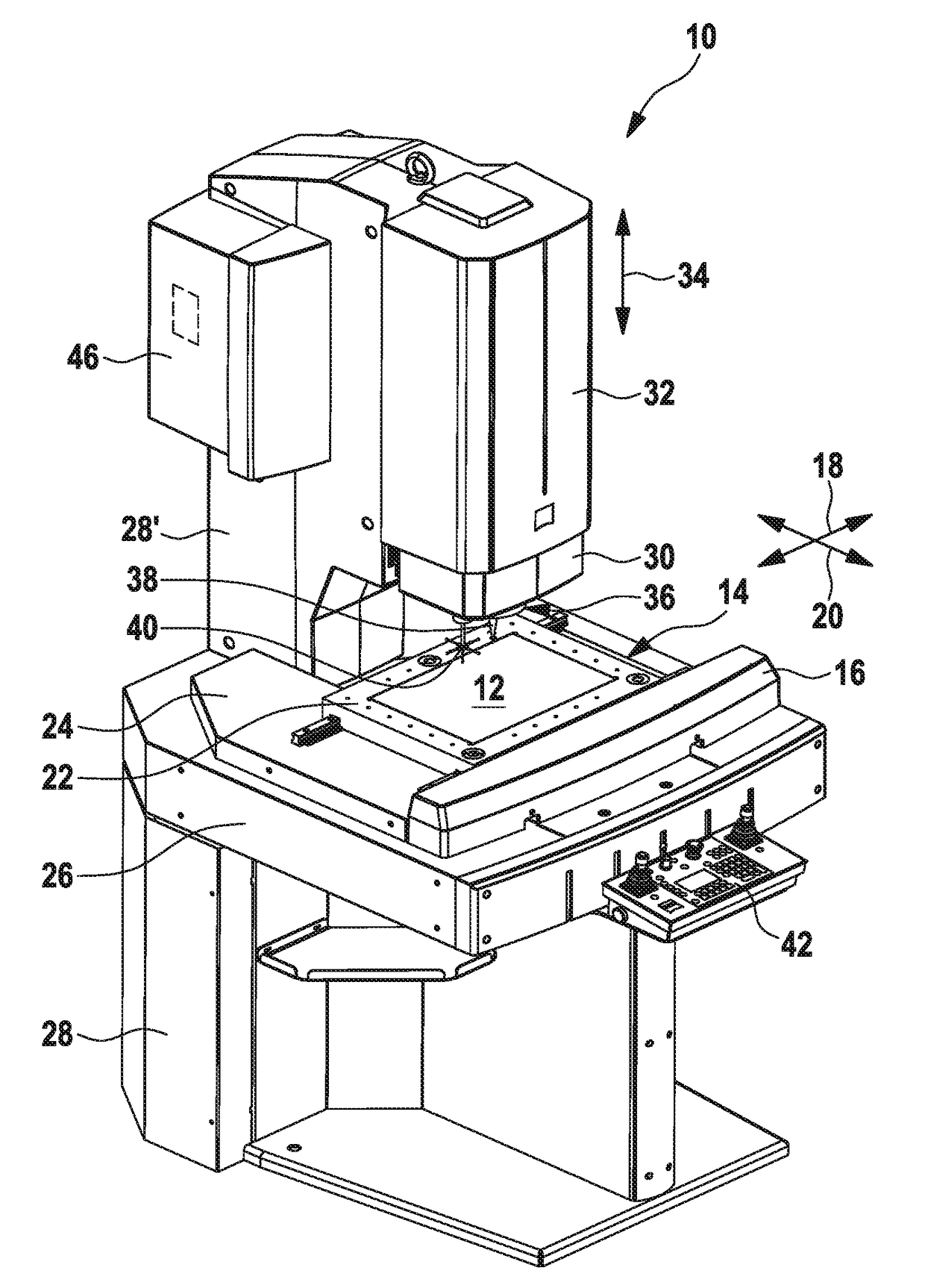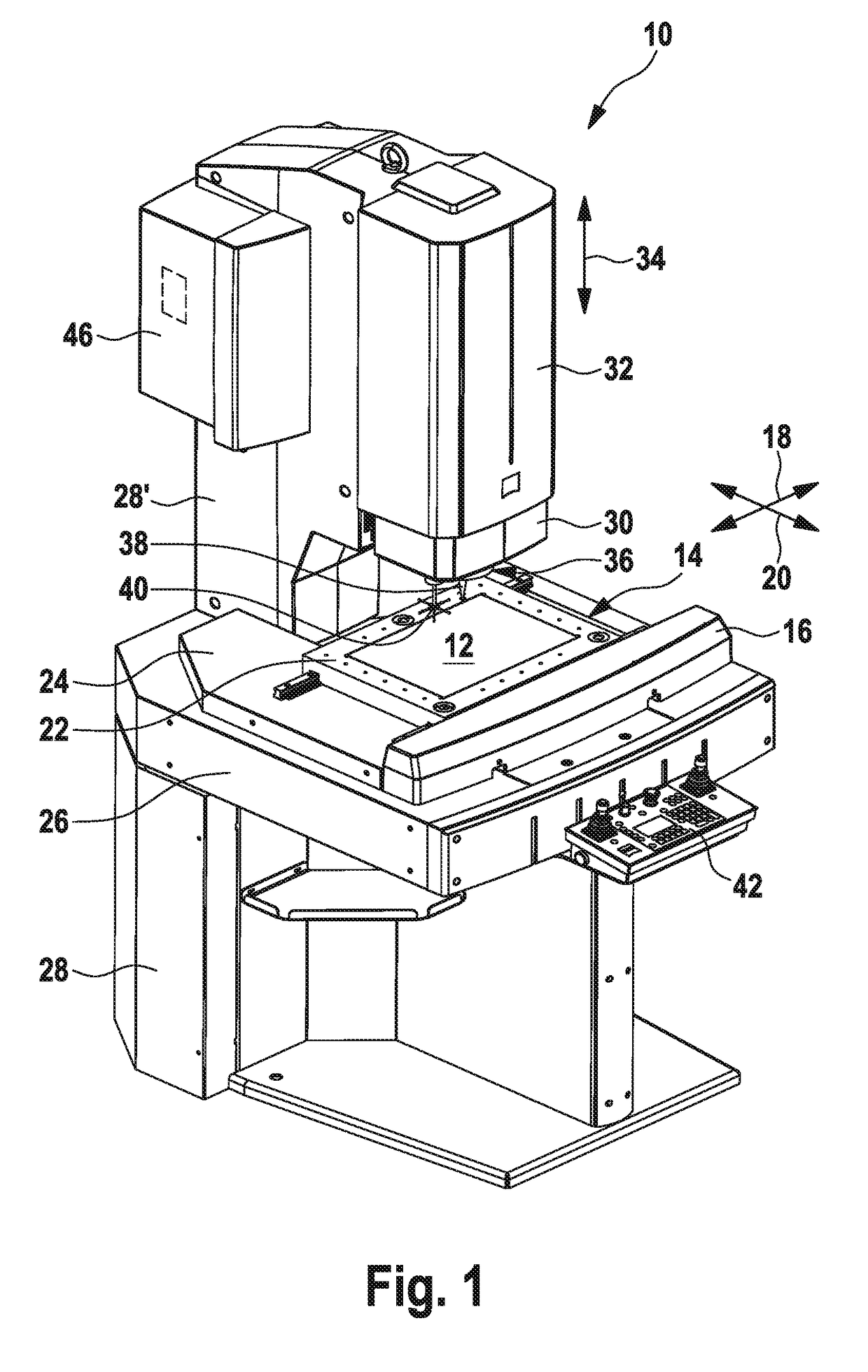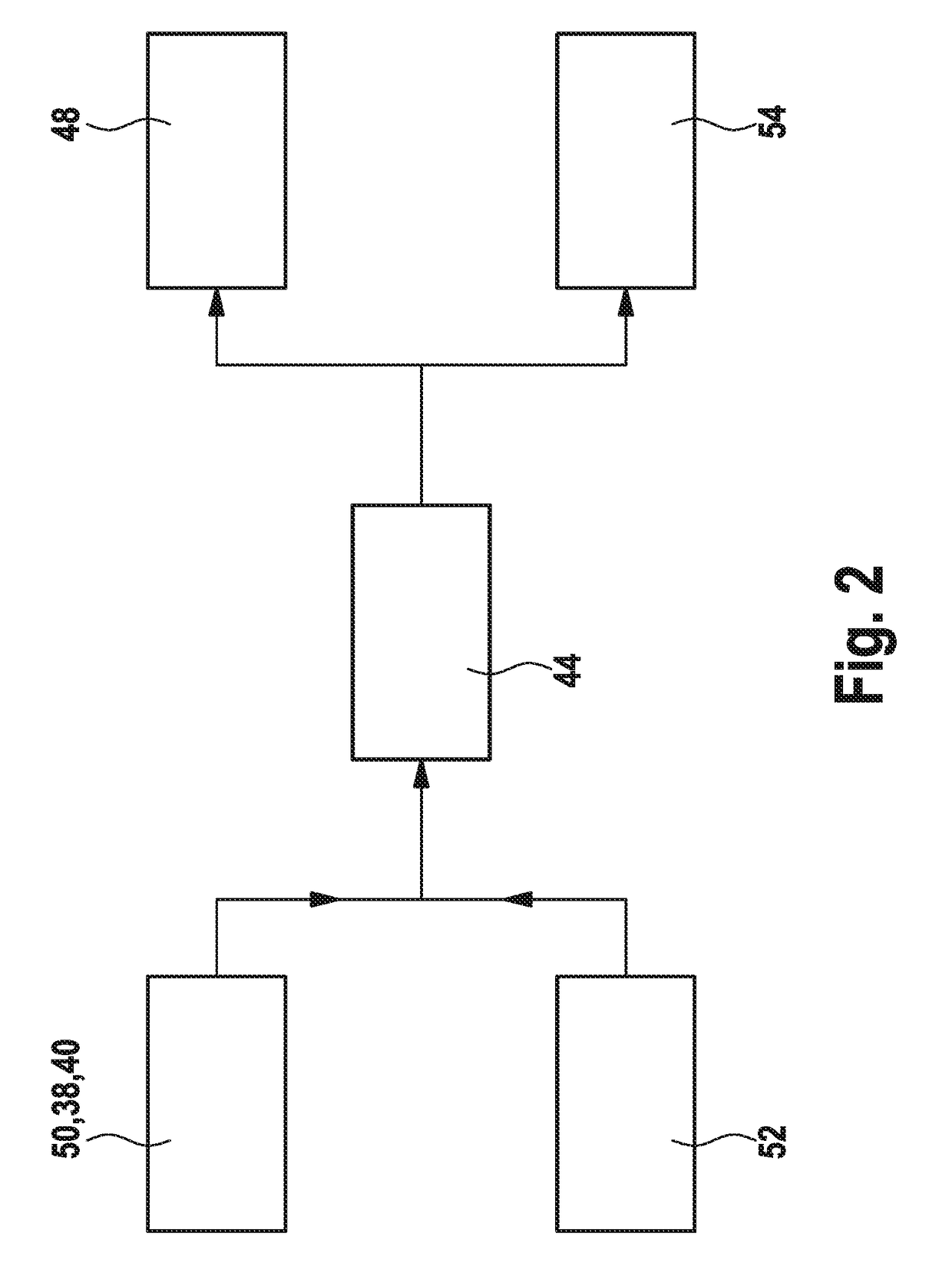Coordinate-measuring machine
a technology of measuring machine and measuring plate, which is applied in the direction of measuring device, using optical means, instruments, etc., can solve the problems of difficult to ensure comparable measurements in this way, take a relatively large amount of time, and are highly time-consuming and prone to errors
- Summary
- Abstract
- Description
- Claims
- Application Information
AI Technical Summary
Benefits of technology
Problems solved by technology
Method used
Image
Examples
Embodiment Construction
[0045]FIG. 1 shows a coordinate measuring machine according to an exemplary embodiment of the present disclosure. The coordinate measuring machine as a whole is here denoted with the reference numeral 10.
[0046]The coordinate measuring machine 10 has a workpiece holder 12, on which the workpiece to be measured can be placed. This workpiece holder 12 is arranged on a measurement table 14. Depending on the embodiment of the coordinate measuring machine, said measurement table can be a fixed, that is to say a non-moving measurement table. However, in the embodiment illustrated in FIG. 1, the measurement table 14 is one which is linearly displaceable along two mutually orthogonal coordinate axes 18, 20 in the measurement table plane using a positioning device 16. The first coordinate axis 18 is normally referred to as the x-axis, and the second coordinate axis 20 is normally referred to as the y-axis.
[0047]In the exemplary embodiment of the coordinate measuring machine 10 shown in FIG. 1...
PUM
 Login to View More
Login to View More Abstract
Description
Claims
Application Information
 Login to View More
Login to View More - R&D
- Intellectual Property
- Life Sciences
- Materials
- Tech Scout
- Unparalleled Data Quality
- Higher Quality Content
- 60% Fewer Hallucinations
Browse by: Latest US Patents, China's latest patents, Technical Efficacy Thesaurus, Application Domain, Technology Topic, Popular Technical Reports.
© 2025 PatSnap. All rights reserved.Legal|Privacy policy|Modern Slavery Act Transparency Statement|Sitemap|About US| Contact US: help@patsnap.com



